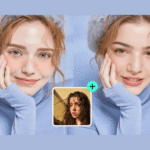Workforce and understudies regularly use Facebook, Twitter, and other social media in their own lives, so how should those equivalent apparatuses be put to scholarly use? Here are a few purposes of uses of social media for teaching and it has been following to discover that I’ve.
1. Conglomerating pictures and data to impart to colleagues or with vested parties that cut across courses and establishments
Model: A. Adam Glenn’s article How Educators Are Using Pinterest for Curation gives a few instances of gathering and sharing pictures in workmanship, news-casting, and business classes (from the PBS blog MediaShift, March 20, 2012).
2. Assembling and sharing information gathered with cell phones during field work or travel abroad
Model: Professor Margaret Rubega involves Twitter for information assortment and partaking in her Ecology and Evolutionary Biology class at the University of Connecticut (from Andrew Revkin in his New York Times blog, May 5, 2011.)
3. Making a public profile to exhibit individual exploration interests and to interface with an expansive crowd
Models: Mark Anthony Neal in Duke University’s African and African American Studies division utilizes a blog, Twitter, Facebook, and different social media to impart his work to people in general, while Misha Angrist in Duke’s Institute for Genome Sciences and Public Policy is a normal supporter of the Public Library of Science blog. At the point when MITx sent off its open-access course in Spring 2012, it additionally gave an MITx Facebook page where educators accumulate criticism from understudies and draw in open consideration regarding their new course model.
4. Involving Twitter in class to keep understudies connected with and to get a feeling of students’ thought processes during addresses
Models: Prof. Monica Rankin and understudies at the University of Texas at Dallas made a video to show their utilization of Twitter in an enormous history course. Prof. Mark Sample at George Mason University offers various ways of utilizing a Twitter backchannel to examine a film with understudies.
5. Shaping understudy concentrate on bunches with the utilization of Google+ Hangouts and other social instruments
Model: Taylor Bell, an understudy at Boise State University, depicts utilizing YouTube and Google+ to concentrate on math with his kindred understudies.
6. Adding social devices to e-reading material
Models: The Kno reading material application has a “share” including where understudies seek clarification on some pressing issues or plan to concentrate on meetings with different understudies utilizing a similar reading material, while the Inkling reading material application allows understudies to follow different understudies utilizing a similar book or make running conversations. Duke’s School of Nursing is investigating the Kno reading material stage in Spring 2012.
These purposes of virtual entertainment in schooling have their contentions. The simple sharing of pictures and content sets out open doors for copyright infringement and counterfeiting. The individual advancement of one’s work can turn into a clique of character. Understudies can get occupied or fall into shallow reasoning when they are utilizing online social during class time or while examining. Having understudies draw in a public crowd through publishing content on a blog or Twitter can open them to provocative remarks and futile contentions.






